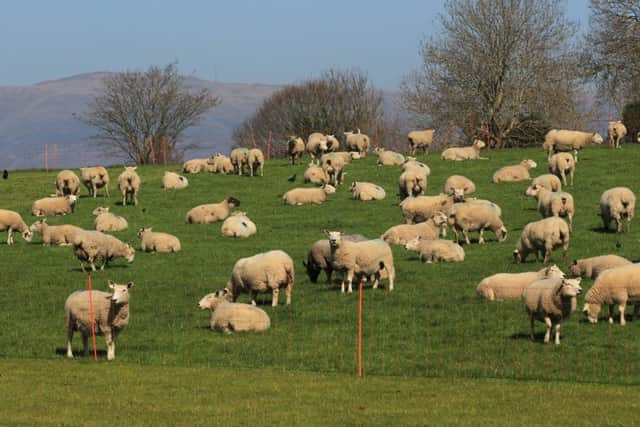Sheep abortion


Submission of aborted foetuses as well as samples of placental material to the regional laboratory is essential in aiding diagnosis. Blood samples taken from aborted or barren ewes can also give an indication of recent exposure to any potential abortion causing disease. Blood sampling can be carried out anywhere from three weeks up to three months after the abortion event.
The most commonly diagnosed cause of abortion in sheep is Toxoplasmosis, caused by the protozoan parasite Toxoplasma gondii. This is closely followed by Enzootic Abortion in Ewes (EAE), caused by the bacteria Chlamydophila abortus. Other infectious agents which can be implicated in abortion outbreaks include salmonellosis, leptospirosis, listerosis and campylobacteriosis.
Toxoplasmosis
Advertisement
Hide AdAdvertisement
Hide AdToxoplasmosis is transmitted to sheep through the ingestion of feed and forage contaminated by infected cat faeces. A single cat dropping can contain enough eggs to infect more than one hundred ewes. Clinical signs depend on the stage of pregnancy during which the ewe is infected, and can include one or all of the following: barren ewes, mummified lambs, abortions and the birth of weak lambs.
Typically, in chronically infected flocks, the abortion rate will be highest in the ewe lambs/hoggets while in newly infected flocks, having had no history of exposure, all age groups can be affected. The only way to effectively control toxoplasmosis is through vaccination. Once the condition has been diagnosed, it is only necessary to vaccinate any sheep not exposed in that group i.e. Other groups on the same farm or all replacement sheep that are bought in.
While the vaccine provides protection for at least two lambing seasons, it is generally only necessary to conduct vaccination of the replacements as they enter the flock in subsequent years.
Generally, immunity is boosted through natural challenge so one vaccination is required throughout the lifetime of the ewe. Vaccination should be carried out at least three weeks pre-tupping. Other important control factors to consider include, good rodent control as they are the main source of infection for the cat, securing feed bins and hay sheds against access from cats and keeping a healthy, vaccinated male cat on farm.
Advertisement
Hide AdAdvertisement
Hide AdThe healthy tomcat will help deter any unhealthy, naïve cats from wandering onto the farm, shedding the parasite and continuing the cycle of infection. While humans most commonly contract toxoplasmosis from cat faeces, transmission from foetal fluids and aborted lambs to humans cannot be ruled out. Therefore contact between pregnant women and lambing/aborting ewes should be avoided.
Enzootic Abortion in Ewes (EAE)
Unlike toxoplasmosis, EAE is transmitted from ewe to ewe and commonly occurs as a result of the buying in of infected replacements. This disease is a zoonosis i.e. transmissible to humans and can cause abortions in women, as well as flu-like symptoms in children and adults.
As a result, serious care should be taken when handling sheep during and after lambing. Abortions normally occur in the last three weeks of pregnancy. Affected ewes can shed the bacteria for approximately three weeks after the abortion and so remain a constant source of infection to other ewes and lambs during this time period. Once susceptible ewes or lambs pick up the infection, the bacteria can become dormant in the body until the next lambing, which in the case of an infected lamb, can be up to two years. Following an abortion, affected ewes will have normal subsequent lambings.
However, they will continue to act as carriers of the bacteria and shed the disease, potentially infecting their own lambs as well as other in contact sheep also. During an EAE outbreak, aborted ewes should be kept separate from the rest of the flock, particularly the replacement ewes. Lambs should not be fostered onto aborted ewes. Injectable oxytetracycline can be used in the face of an outbreak to reduce the number of abortions in that current season.
Advertisement
Hide AdAdvertisement
Hide AdVaccination will effectively control EAE within the flock. Generally, only one vaccination is needed for the lifetime of the ewe. However, the licensed duration of protection is for at least three years post vaccination. Vaccination should be carried out at least four weeks pre-tupping.
A correct diagnosis is incredibly important in determining the cause of the losses. Once a cause has been found, then the appropriate measures can be taken to help prevent re-occurrence. In some case that might involve the use of one or both of the vaccines mentioned above. Once the appropriate measures have been followed, the target of less than two per cent abortions/stillbirths can be achievable, hence ensuring the profitability and sustainability of the flock.